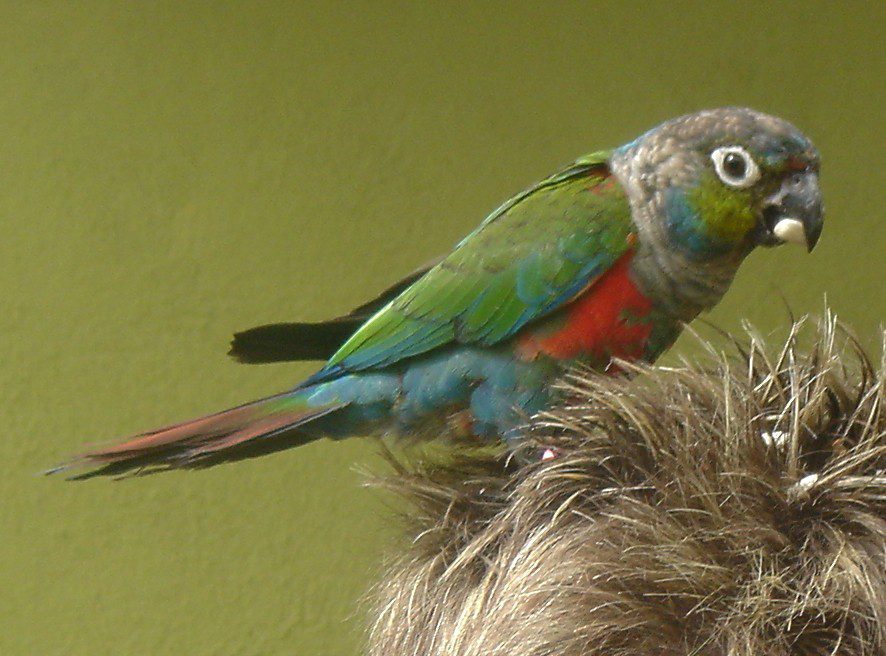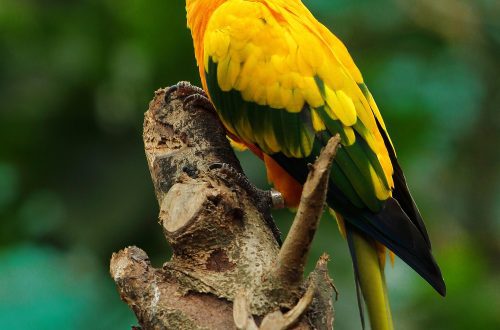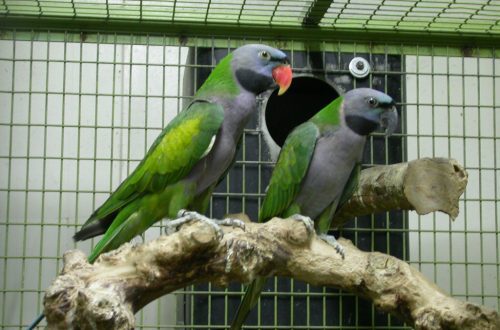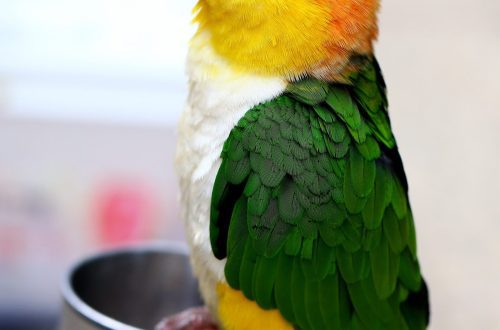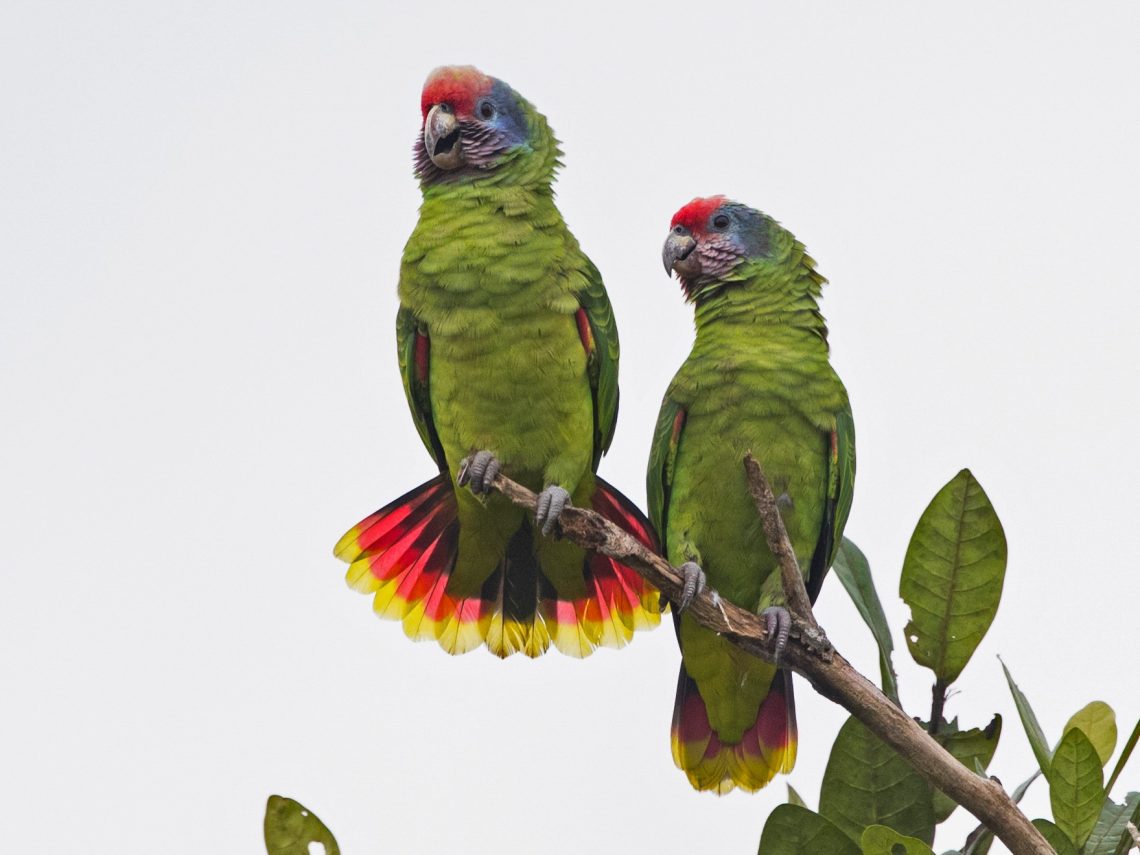
red-tailed parrots
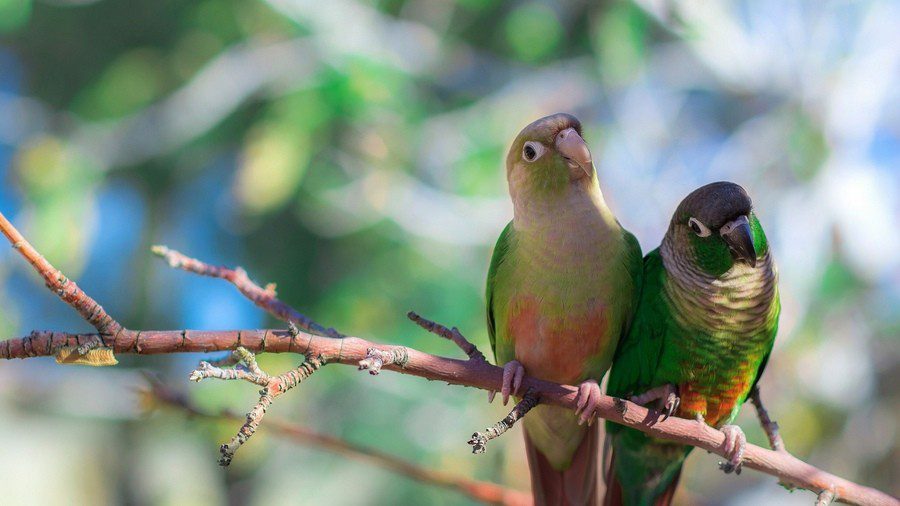 In the photo: red-tailed parrot
In the photo: red-tailed parrot
Red-tailed parrots (Pyrrhura) have become quite common in households and there is an explanation for this. These small birds have bright plumage and are very inquisitive, they are trainable, they can perform tricks, they quickly get used to a person. They are not as loud as large parrots, but have enough qualities to be noticed. In addition, some species have different colors. They breed well in captivity and are quite unpretentious. The life expectancy of red-tailed parrots is quite long – up to 25 years. The disadvantages include a rather liquid litter, which must be taken into account when cleaning. They gnaw quite a lot, you need to get used to their voice. There is practically no ability to imitate speech.
MAINTENANCE AND CARE OF RED-TAILED PARROTS
Red-tailed parrots require a fairly large space, an aviary of about 2 m would be ideal. It is better to let it be made of safe metal, since the bird will destroy all the wood pretty quickly. If a cage is chosen for keeping, then it should be spacious, the larger the better. The minimum size of the cage is 60x60x120 cm. Perches of the required diameter with bark must be installed in the cage. Birds are quite smart, so you should close the cage or aviary very securely. Red-tailed parrots are afraid of drafts, the cage should be in a bright place, but not in direct sunlight, not in a draft and away from heating appliances. There should also be several toys in the cage, these birds are very inquisitive, but they don’t pay much attention to toys. Don’t forget your bathing suit. Outside the cage, the bird should only be supervised, because because of their curiosity they can easily get into trouble, get confused somewhere, get stuck. Equip a stand with toys, ladders, ropes and balls for the feathered one, the parrot will be pleased.
FEEDING RED-TAILS
The basis of the diet of red-tailed parrots should be a grain mixture containing canary seed, various types of millet, a small amount of oats, buckwheat, safflower. Sunflower seeds can be offered in soaked and germinated form. Instead of a grain mixture, granular feed can be used, however, accustoming to this type of feed should be gradual. Also add legumes, corn, germinated cereals to your diet. Be sure to offer greens – weeds (wild cereals, dandelion, wood lice, shepherd’s purse), various types of salads, chard. Vegetables, fruits, berries should be present in the diet daily: carrots, green peas, apples, pears, citrus fruits, bananas, grapes, pomegranates, grapes, etc. Be sure to offer parrots branch food to meet their needs.
The cell must contain sources of minerals and calcium – chalk, mineral mixture, sepia, clay.
In order to entertain the parrot, you can use caps and hoarders, compiled by yourself. The bird will forage on its own and will be busy for a while.
BREEDING OF RED-TAILED PARROTS
In order for red-tailed parrots to breed, it is necessary to select a heterosexual pair, this will be problematic, since sexual dimorphism is not characteristic of birds. For an accurate determination, a DNA test will be required, or, in extreme cases, blind selection of birds. Birds must be healthy at the age of at least 1,5 – 2 years. Parrots should be in excellent condition, healthy, well-fed, should not be relatives. For successful reproduction, it is necessary to gradually increase daylight hours to 14 hours (add no more than 10 minutes a day), be sure to diversify the daily diet (fruits, vegetables, herbs, germinated grains should make up about 70% of the diet), be sure to offer the birds feed of animal origin to stimulate sexual behaviour. And the main stimulator of their breeding is high humidity of 75 – 85%. The house should be 25x35x40 cm in size, the taphole size is 7 cm. Hardwood sawdust or shavings are poured onto the bottom. Birds have to fly a lot. Be sure to have enough branches in the cage or aviary. This can increase the humidity in the nest. To maintain humidity in the nesting house, you can also use peat, which is laid on the bottom of the house, and sprinkled with shavings on top. When the room temperature is high, moisture can be added to the peat with a syringe. To control the humidity in the nest, you can use a moisture meter.



